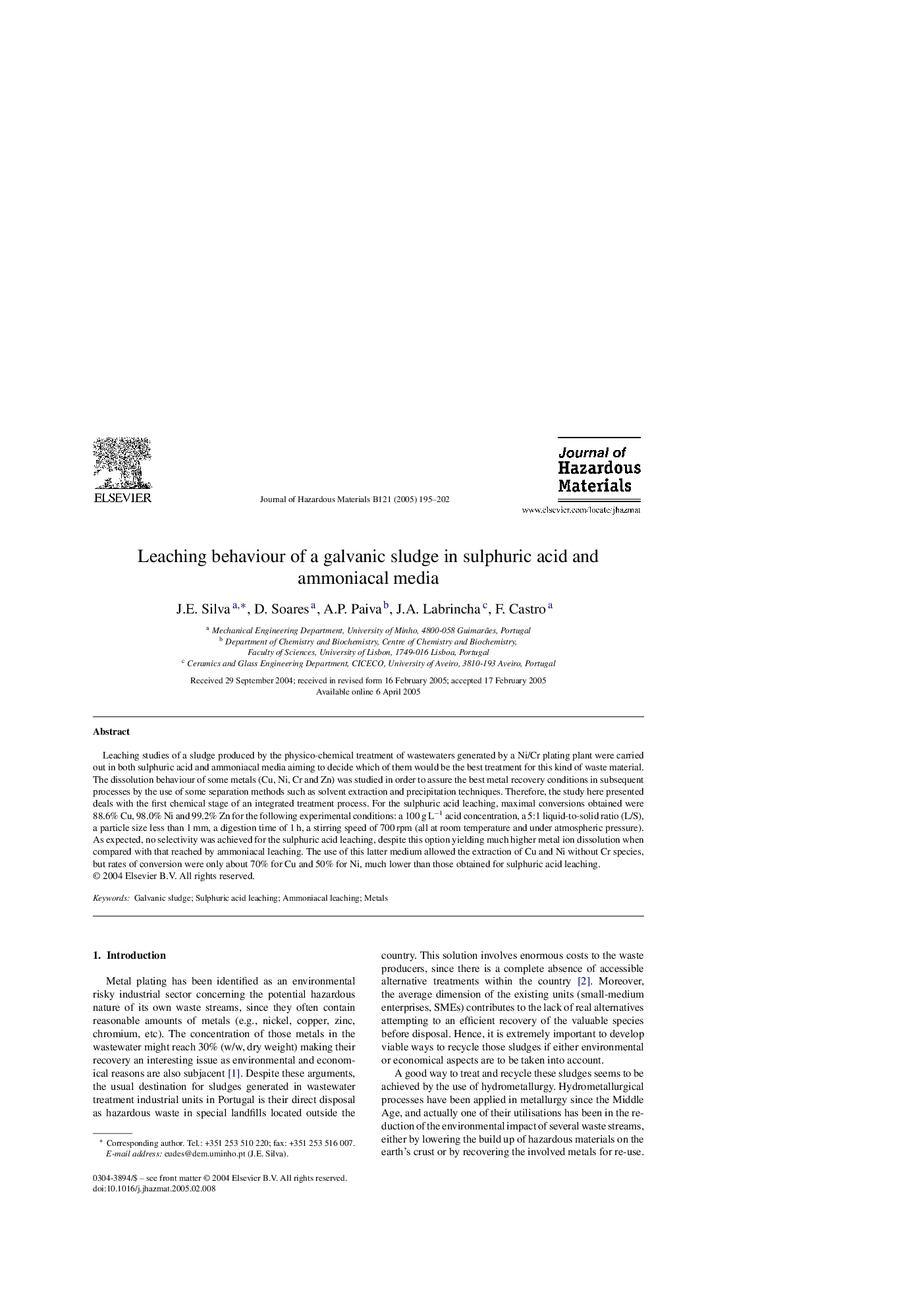| Article ID | Journal | Published Year | Pages | File Type |
|---|---|---|---|---|
| 9674282 | Journal of Hazardous Materials | 2005 | 8 Pages |
Abstract
Leaching studies of a sludge produced by the physico-chemical treatment of wastewaters generated by a Ni/Cr plating plant were carried out in both sulphuric acid and ammoniacal media aiming to decide which of them would be the best treatment for this kind of waste material. The dissolution behaviour of some metals (Cu, Ni, Cr and Zn) was studied in order to assure the best metal recovery conditions in subsequent processes by the use of some separation methods such as solvent extraction and precipitation techniques. Therefore, the study here presented deals with the first chemical stage of an integrated treatment process. For the sulphuric acid leaching, maximal conversions obtained were 88.6% Cu, 98.0% Ni and 99.2% Zn for the following experimental conditions: a 100 g Lâ1 acid concentration, a 5:1 liquid-to-solid ratio (L/S), a particle size less than 1 mm, a digestion time of 1 h, a stirring speed of 700 rpm (all at room temperature and under atmospheric pressure). As expected, no selectivity was achieved for the sulphuric acid leaching, despite this option yielding much higher metal ion dissolution when compared with that reached by ammoniacal leaching. The use of this latter medium allowed the extraction of Cu and Ni without Cr species, but rates of conversion were only about 70% for Cu and 50% for Ni, much lower than those obtained for sulphuric acid leaching.
Related Topics
Physical Sciences and Engineering
Chemical Engineering
Chemical Health and Safety
Authors
J.E. Silva, D. Soares, A.P. Paiva, J.A. Labrincha, F. Castro,
